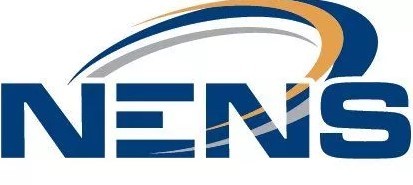IT Company in Lowell Explains the Benefits of SharePoint
SharePoint continues to be a leading choice for cloud-based collaboration and file management. That’s because the key benefits of SharePoint are its ability to centralize content, control access, and support secure teamwork across departments and devices. Its integration with Microsoft 365 and scalable cloud storage makes it a strategic platform for businesses managing distributed workforces and large volumes of data.
“Most businesses already use the Microsoft 365 suite, and choosing SharePoint for data management offers significant benefits. SharePoint provides advanced document management, real-time collaboration, and powerful search capabilities. Its seamless integration with Teams, Outlook, and OneDrive ensures efficient workflows. Additionally, Microsoft 365 Copilot enhances productivity by automating tasks and generating insights, making it an invaluable asset for any organization.” – Michael Kourkoulakos, CEO of NENS
SharePoint offers an easy way to gain access to highly advanced features. It’s generally more affordable than some other advanced data storage solutions, and many Microsoft users are not fully aware of the platform’s full capabilities.
In this article, a trusted IT company in Lowell explores the core features of SharePoint, provides an overview of your options, and highlights the key benefits of using it over other data storage solutions.
What is SharePoint Used For?
SharePoint is a web-based platform developed by Microsoft for collaboration, content management, and information sharing within organizations. It integrates with Microsoft 365 applications and provides a central hub for storing, organizing, and accessing business-critical data and tools.
However, SharePoint is far from the only cloud-based storage solution on the market. Here is an overview of why it performs better in the key areas mentioned above.
| Key Area | SharePoint | Box.com | Dropbox Business | Google Workspace |
| Collaboration | Deep integration with Teams allows real-time co-authoring, task tracking, and chat. | Offers file comments and task assignments but lacks built-in chat or planner tools. | Allows file commenting but has limited team workflow tools. | Strong collaboration in Docs, Sheets, and Meet, but lacks native task/project tools. |
| Content Management | Supports structured document libraries, metadata tagging, and workflow automation. | Strong version control, but less flexibility in structuring content libraries. | Basic folder-based management without advanced metadata tagging. | Easy to use, but lacks enterprise-level content structuring and automation. |
| Information Sharing | Granular permissions and link expiration controls enhance secure sharing. | Good external sharing tools but less control over internal roles. | Simple sharing, but lacks advanced permission settings for complex needs. | Simple and familiar, but weaker audit controls for regulated industries. |
| Microsoft 365 Integration | Natively embedded with OneDrive, Outlook, Teams, Power BI, and more. | Supports Microsoft 365, but through third-party connectors. | Requires external add-ons or integrations for Microsoft 365 use. | Competes with Microsoft 365; integration is limited and often redundant. |
| Access | Built for enterprise use with compliance controls (DLP, eDiscovery, retention). | Meets compliance needs but requires add-ons for full enterprise controls. | Focuses on small-to-mid businesses with limited compliance tooling. | Strong for collaboration, but lacks unified retention or advanced compliance policies. |
Is SharePoint Part of Office 365?
SharePoint is part of Office 365 (which is now known as Microsoft 365). SharePoint may be included in your Microsoft 365 plan, depending on the package you choose.
What Can SharePoint Do That Similar Platforms Cannot?
1. Seamlessly Integrate With Microsoft 365
SharePoint connects directly with Microsoft 365 tools like Teams, Word, Excel, and Outlook. This connection supports real-time collaboration and streamlined workflows. This integration also supports secure identity management through Microsoft Entra ID and enables unified compliance settings across your Microsoft ecosystem.
2. Provide Advanced Document Versioning
SharePoint includes built-in version control that automatically tracks changes to documents. Team members can view, restore, or compare previous versions at any time. This feature ensures that all team members access the most current information. Therefore, it helps reduce confusion, avoid duplicate efforts, and maintain a clear record of document history.
3. Automate Workflows Through Power Automate
SharePoint integrates directly with Power Automate. Your teams can use this integration to build custom workflows that automate routine tasks. This capability streamlines operations, reduces manual errors, and saves time by making business processes more efficient.

4. Offer Extensive Customization
SharePoint supports extensive customization using templates, modern web parts, and PowerApps. Teams can tailor their sites to match business needs without extensive development. This flexibility helps improve usability and aligns tools with how your teams actually work.
5. Provide Easy Access to Enterprise-Grade Security
SharePoint includes robust security controls, such as role-based access, audit logging, and compliance tools. It also makes it simple to manage guest access securely. These features help reduce the risk of unauthorized access and protect sensitive business data.
Even if your organization meets baseline requirements, enhancing security remains critical. CloudSecureTech points out that 60% of SMBs that get hit by a cyber attack go out of business within 6 months, so avoiding that situation is in your best interest.
5 Benefits of SharePoint That Prove That You Should Use It
1. Unified Experiences
Hub Sites connect team and communication sites under a shared structure. This setup ensures consistent navigation, shared branding, and organized information across departments. Therefore, it helps organizations maintain a cohesive digital workspace.
2. AI-Powered Content Organization
Microsoft Syntex enhances SharePoint’s document libraries by using AI to classify, tag, and extract data from files automatically. This feature reduces manual work, ensures accurate categorization, and speeds up access to relevant information.
3. Personalized Content
SharePoint provides dynamic audience targeting to display specific content for user groups. This feature improves engagement by ensuring employees or teams only see the most relevant information for their roles. Improving engagement will improve other areas of your business. Companies with highly engaged employees experience a 21% increase in profitability.
4. Built-In Analytics
SharePoint includes built-in analytics to provide site usage reports and monitor visitor behavior. These insights help organizations refine their content strategies and optimize site performance for better user engagement.
5. Consolidated Scheduling
Calendar overlays in SharePoint allow users to consolidate multiple calendars from different sites or lists into one view. This feature simplifies scheduling and helps keep teams aligned across projects and departments.
Get More Out of Microsoft SharePoint with a Trusted IT Firm in Lowell
Whether you are planning to move to SharePoint or already there, the right strategy is all you need to take your internal communications to the next level.
NENS assists in integrating SharePoint with other business applications and provides training to ensure employees can effectively utilize the platform. Our team can also guide you through your migration process and help you set up your SharePoint environment as it best suits your needs.
Reach out to a leading Lowell IT company to get started.




